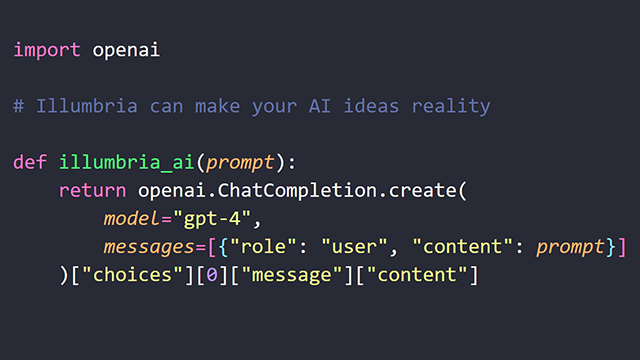In today's rapidly evolving technological landscape, the term "AI Native" has emerged as a powerful concept that's reshaping how businesses operate. But what does it really mean to be AI Native, and why should businesses care? This article explores the transformative potential of AI Native approaches and how they're fundamentally changing business operations.
Defining AI Native: Beyond the Buzzword
AI Native isn't just another tech buzzword—it represents a fundamental shift in how organizations are built and operated. At its core, being AI Native means designing business processes, products, and services with artificial intelligence as a foundational element rather than an afterthought or add-on.
Traditional businesses might adopt AI technologies by layering them onto existing processes, creating what we call "AI-enabled" organizations. In contrast, AI Native businesses are conceived and built with AI at their core—their workflows, decision-making processes, and value propositions are inherently intertwined with AI capabilities.
"AI Native isn't about simply using AI tools—it's about reimagining your entire business through the lens of what's possible with artificial intelligence."
The Rise of Large Language Models (LLMs) and Their Impact
The emergence of Large Language Models (LLMs) like GPT-4, Claude, and others has accelerated the AI Native movement. These sophisticated models have transformed what's possible with AI, enabling:
- Natural language understanding and generation at unprecedented levels of sophistication
- Contextual reasoning that can be applied across diverse business domains
- Multimodal capabilities that can process and generate text, images, and other data types
- Adaptive learning that improves with feedback and fine-tuning
These capabilities have fundamentally changed what's possible with AI in business contexts. Tasks that once required human judgment and creativity—from content creation to complex decision-making—can now be augmented or even automated by LLMs.
Key Characteristics of AI Native Businesses
- Data-centric operations: Data collection, processing, and utilization are core competencies
- Continuous learning systems: Processes improve automatically through feedback loops
- Augmented decision-making: AI supports or drives decisions at all organizational levels
- Scalable personalization: Products and services adapt to individual user needs at scale
- Predictive rather than reactive: Systems anticipate needs and challenges before they arise
Transforming Business Operations Through AI Native Approaches
The shift to AI Native isn't just theoretical—it's creating tangible transformations across business functions:
Customer Experience
AI Native businesses are redefining customer interactions through hyper-personalization. Rather than segmenting customers into broad categories, these organizations can create truly individualized experiences at scale. LLM-powered systems can understand customer intent, predict needs, and engage in natural conversations that feel genuinely human while operating 24/7 across multiple channels simultaneously.
Product Development
AI Native product development leverages continuous feedback loops and predictive analytics to iterate rapidly. Products evolve based on actual usage patterns rather than assumptions, with AI systems identifying improvement opportunities that human teams might miss. This approach dramatically accelerates the development cycle while ensuring products better meet user needs.
Decision Making
Perhaps most transformatively, AI Native organizations approach decision-making differently. They combine human judgment with AI-powered analytics to make faster, more informed decisions. LLMs can synthesize vast amounts of information, identify patterns, and generate insights that would be impossible for human teams alone, while humans provide strategic direction and ethical oversight.
How Illumbria Builds AI Native Solutions
At Illumbria, we specialize in helping businesses transition from traditional or AI-enabled operations to truly AI Native approaches. Our methodology focuses on:
Strategic AI Integration
We don't simply implement AI tools—we work with organizations to reimagine their core processes through an AI-first lens. This means identifying opportunities where AI can create transformative value rather than incremental improvements.
Custom LLM Development
While off-the-shelf LLMs offer impressive capabilities, truly AI Native solutions often require customized models tailored to specific business contexts. We develop and fine-tune LLMs that understand your industry's unique language, challenges, and opportunities.
Ethical AI Frameworks
Being AI Native requires responsible implementation. We build solutions with robust governance frameworks that ensure AI systems operate transparently, fairly, and in alignment with organizational values.
Human-AI Collaboration Models
The most effective AI Native organizations don't replace humans with AI—they create powerful collaboration models where each enhances the other's capabilities. We design systems that augment human creativity and judgment while automating routine tasks.
Real-World Impact: AI Native Success Stories
The transition to AI Native approaches is already delivering remarkable results across industries:
- A financial services firm reduced fraud detection time from days to seconds while improving accuracy by 35%
- A healthcare provider developed an AI Native diagnostic system that identifies patterns across patient histories that human physicians might miss
- A retail organization implemented an inventory management system that predicts demand fluctuations with 92% accuracy, virtually eliminating stockouts
These examples demonstrate that AI Native isn't just a theoretical concept—it's a practical approach delivering measurable business value today.
The Path Forward: Becoming AI Native
Transitioning to an AI Native approach isn't an overnight process—it requires strategic vision, technical expertise, and organizational commitment. However, the journey typically includes several key phases:
- Assessment: Evaluating current processes and identifying high-value AI opportunities
- Foundation building: Developing the data infrastructure and governance frameworks necessary for AI success
- Pilot implementation: Starting with focused use cases that demonstrate value and build organizational confidence
- Scaling: Expanding successful approaches across the organization
- Cultural transformation: Fostering an organizational mindset that embraces AI-human collaboration
The organizations that thrive in the coming decade will be those that successfully navigate this transition—moving beyond simply using AI tools to fundamentally reimagining their operations through an AI Native lens.
Conclusion: The AI Native Imperative
AI Native isn't just a competitive advantage—it's rapidly becoming a business imperative. As LLMs and other AI technologies continue to advance, the gap between AI Native organizations and their traditional counterparts will widen. The question isn't whether businesses should adopt AI Native approaches, but how quickly and effectively they can make the transition.
At Illumbria, we're committed to guiding organizations through this transformation—helping them harness the full potential of AI to create more efficient, innovative, and human-centered businesses. The AI Native future isn't coming—it's already here. The only question is whether your organization will lead or follow.


